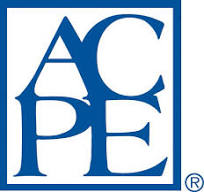University of Pittsburgh Health Sciences eLearning Environment Internet-based Studies in Education and Research
 INTRODUCTION
INTRODUCTION
 NABP and DOB Data Collection
NABP and DOB Data Collection
 PULSE: 01/19/2022 - A Change of Heart on the Use of Aspirin for Primary Prevention
PULSE: 01/19/2022 - A Change of Heart on the Use of Aspirin for Primary Prevention
 QUIZ
QUIZ
 EVALUATION
EVALUATION
 CERTIFICATE
CERTIFICATE
Credit Hours: Pharmacy 1.00
Who should attend:
- Clinical faculty from the University of Pittsburgh School of Pharmacy
- Clinical staff pharmacists employed by the University of Pittsburgh Medical Center and deployed throughout the hospital campus in unit based roles and centrally in the department of pharmacy's main pharmacy
- Student pharmacy interns currently working within the department of pharmacy
- Certified Pharmacy Technicians
Cardiovascular disease (CVD) pertains to a class of diseases affecting the cardiovascular system, and it remains the leading cause of death in the United States. Aspirin is an irreversible cyclooxygenase enzyme inhibitor believed to inhibit platelet function, stabilize atherosclerotic plaque progression, and prevent atherosclerotic plaque ulceration and thrombosis. While the use of aspirin has reproducibly proven benefits for secondary prevention of ASCVD, its use for primary prevention has been subject inconsistent findings, contradictory guideline recommendations, and subsequent controversy over the past few decades. Three randomized controlled trials published in 2018 (“Aspirin to reduce risk of initial vascular events,” abbreviated ARRIVE; “A student of cardiovascular events in diabetes,” abbreviated ASCEND; and “The aspirin in reducing events in the elderly trial,” abbreviated ASPREE) have shown that the vascular benefits of aspirin, if any, are exceedingly small and may be outweighed by the risk of bleeding. Most recently in late 2021, the United States Preventive Services Task Force (USPSTF) drafted revisions to its recommendation on low-dose aspirin for primary prevention, citing a small net benefit in adults aged 40-59 years with high ASCVD risk and possible harm in adults over age 60 years. The updated USPSTF 2021 draft recommendation better aligns with those proposed by the American College of Cardiology (ACC) and American Heart Association (AHA) 2019 guideline, the American Diabetes Association (ADA) 2022 guideline, and the European Society of Cardiology (ESC) 2021 guideline. Despite more of a consensus on the use of aspirin for primary prevention, a multitude of uncertainties still remain, including the implications of a changing patient demographic, accurate ASCVD and bleeding risk estimation tools, aspirin resistance or unresponsiveness, and the use of aspirin in colorectal cancer prevention.
Upon successful completion of this continuing pharmacy education program, the participant should be able to:
- Explain the history and pathophysiology of aspirin use for primary prevention of ASCVD
- Describe recent literature evidence and guideline recommendations on the use of aspirin for primary prevention of ASCVD.
- Identify clinical controversies involving aspirin for primary prevention of ASCVD.
Pharmacy Continuing Education Credits In support of improving patient care, the University of Pittsburgh is jointly accredited by the Accreditation Council for Continuing Medical Education (ACCME), the Accreditation Council for Pharmacy Education (ACPE), and the American Nurses Credentialing Center (ANCC), to provide continuing education for the healthcare team. The assigned universal program number(s) is JA4008223-0000-23-109-H01-P.
In support of improving patient care, the University of Pittsburgh is jointly accredited by the Accreditation Council for Continuing Medical Education (ACCME), the Accreditation Council for Pharmacy Education (ACPE), and the American Nurses Credentialing Center (ANCC), to provide continuing education for the healthcare team. The assigned universal program number(s) is JA4008223-0000-23-109-H01-P.This knowledge-based activity provides 1 contact hours of continuing pharmacy education credit. |
Suggested Additional Reading:
- Virani SS, Alonso A, Aparicio HJ, et al. Heart disease and stroke statistics-2021 update: a report from the American Heart Association. Circulation. 2021;143(8):e254-e743.
- Capodanno D, Angiolillo DJ. Aspirin for Primary Cardiovascular Risk Prevention and Beyond in Diabetes Mellitus. Circulation. 2016;134(20):1579-1594.
- Dasa O, Pepine CJ, Pearson TA. Aspirin in primary prevention: what changed? A critical appraisal of current evidence. Am J Cardio. 2021;141:38-48.
- U.S. Preventive Services Task Force. Aspirin use for the primary prevention of cardiovascular disease and colorectal cancer: U.S. Preventive Services Task Force recommendation statement. Ann Intern Med. 2016;164(12):836-845.
- Seidu, S., Kunutsor, S.K., Sesso, H.D. et al. Aspirin has potential benefits for primary prevention of cardiovascular outcomes in diabetes: updated literature-based and individual participant data meta-analyses of randomized controlled trials. Cardiovasc Diabetol. 2019; 18 (70).
- ASCEND Study Collaborative Group, L Bowman, M Mafham, K Wallendszus, et al. Effects of aspirin for primary prevention in persons with diabetes mellitus. N Engl J Med. 2018; 379: 1529-1539
- Gaziano JM, Brotons C, Coppolecchia R, et al.; ARRIVE Executive Committee. Use of aspirin to reduce risk of initial vascular events in patients at moderate risk of cardiovascular disease (ARRIVE): a randomised, double-blind, placebo-controlled trial. Lancet. 2018 Sep 22;392(10152):1036-1046.
- Arnett DK, Blumenthal RS, Albert MA, et al. 2019 ACC/AHA guideline on the primary prevention of cardiovascular disease: a report of the American College of Cardiology/American Heart Association Task Force on Clinical Practice Guidelines. Circulation. 2019;140(11):e596-e646.
- JJ McNeil, R Wolfe, RL Woods, et al. Effect of aspirin on cardiovascular events and bleeding in the healthy elderly. N Engl J Med. 2018. 379: 1509-1518
- United States Preventive Services Task Force. Draft recommendation statement: aspirin use to prevent cardiovascular disease. Updated 2021. https://www.uspreventiveservicestaskforce.org/uspstf/draft-recommendation/aspirin-use-to-prevent-cardiovascular-disease-preventive-medication. Accessed November 18, 2021.
- Ajufo E, Ayers CR, Vigen R, et al. Value of Coronary Artery Calcium Scanning in Association With the Net Benefit of Aspirin in Primary Prevention of Atherosclerotic Cardiovascular Disease. JAMA Cardiol. 2021;6(2):179–187.
- Cainzos-Achirica M, Miedema MD, McEvoy JW, et al. Coronary Artery Calcium for Personalized Allocation of Aspirin in Primary Prevention of Cardiovascular Disease in 2019: The MESA Study (Multi-Ethnic Study of Atherosclerosis). Circulation. 2020;141(19):1541-1553.
- Orringer CE, Blaha MJ, Blankstein R, et al. The National Lipid Association scientific statement on coronary artery calcium scoring to guide preventive strategies for ASCVD risk reduction. J Clin Lipidol. 2021 Jan-Feb;15(1):33-60. doi: 10.1016/j.jacl.2020.12.005. Epub 2020 Dec 11. PMID: 33419719.
Joint Accreditation Statement - this statement supersedes any other statement on this page
 In support of improving patient care, the University of Pittsburgh is jointly accredited by the Accreditation Council for Continuing Medical Education (ACCME), the Accreditation Council for Pharmacy Education (ACPE), and the American Nurses Credentialing Center (ANCC), to provide continuing education for the healthcare team.
In support of improving patient care, the University of Pittsburgh is jointly accredited by the Accreditation Council for Continuing Medical Education (ACCME), the Accreditation Council for Pharmacy Education (ACPE), and the American Nurses Credentialing Center (ANCC), to provide continuing education for the healthcare team.Pharmacy (CPE) - This knowledge-based activity provides 1.0 contact hours of continuing pharmacy education credit.
Other Healthcare Professionals: Other health care professionals will receive a certificate of attendance confirming the number of contact hours commensurate with the extent of participation in this activity.
No planners, members of the planning committee, speakers, presenters, authors, content reviewers and/or anyone else in a position to control the content of this education activity have relevant financial relationships to disclose.
The certificate issued at the end of this course is not official, it only indicates you obtained a passing grade for this activity.
The ACPE and the National Association of Boards of Pharmacy (NABP) have developed a continuing pharmacy education (CPE) tracking service, CPE Monitor, that will authenticate and store data for completed CPE units received by pharmacists and pharmacy technicians from ACPE-accredited providers.
ACPE credit for participation in any pharmacist and/or technician achieved from this website is entered quarterly. Please allow 60 days from date of completion, for your credits to be added to the CPE Monitor.
For questions regarding NABP profile creation and maintenance, as well as the reporting process to the state boards of pharmacy, please contact NABP Customer Service at 847/391-4406, Monday-Friday between 8:30 AM and 5 PM central time.
The University of Pittsburgh is an affirmative action, equal opportunity institution.